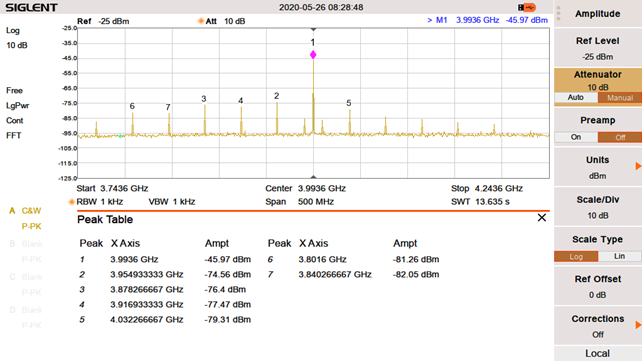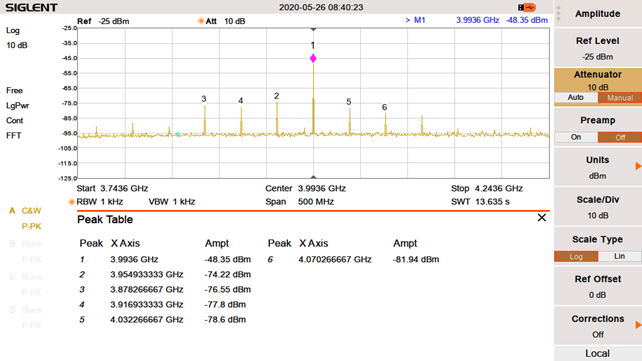Your spectrum plots are a span of +/- 10 MHz from carrier.
If you have problems with the 38.4 MHz clock bleeding into the carrier, you won’t see that necessarily in that tight of a spectral window. You have to look at least 38.4 MHz away from the carrier to see those effects.
You definitely have a pretty strong impact from your regulator (2.3 MHz spikes). That appears to be feeding into your PLL networks and could be upsetting things.
You need to make sure whatever is driving XTAL1 is isolated in power from VDDPA1/2. Those problems will not necessarily be evident in CW mode since there are no power spikes in CW mode.
Higher amplitude into XTAL1 will cause various spikes in the spectrum output, but generally at 38.4 MHz intervals from the carrier, so they would not be displayed on your plots so far.
Not necessarily, just indicates a slightly higher noise floor.
Distributing a clock is not an easy task, lots of ways for it to go wrong that remain buried in the details that are not obvious from your post.
Mike Ciholas, President, Ciholas, Inc
3700 Bell Road, Newburgh, IN 47630 USA
mikec@ciholas.com
+1 812 962 9408
Hi Mike,
We did a compare between MDEK1001 and our HW in a large spectral scale windows as follow:

[MDEK1001]

[OUR BOARD WITH 3V3 SWING SUPPLIED DIRECTLY WITH CDCM]

[OUR BOARD WITH 1V8 SWING SUPPLIED DIRECTLY WITH CDCM]
For us they are comparable, what do you think?
Blockquote You need to make sure whatever is driving XTAL1 is isolated in power from VDDPA1/2. Those problems will not necessarily be evident in CW mode since there are no power spikes in CW mode.
Yes. We did this change and we have a look improvements in transmission.
Thanks,
Gianni
Seems so. The appearance of 38.4 MHz spaced spurs is to be expected, though these seem somewhat stronger than what I recall our boards producing. I seem to recall we were more than 30 dB from the carrier and you don’t quite reach that in these sweeps. This could be related to the transmit power selected, though, or the fact we used a lower voltage on XTAL1 driving (1.8 volts).
The real test is in how the units perform. Good luck with your project.
Mike Ciholas, President, Ciholas, Inc
3700 Bell Road, Newburgh, IN 47630 USA
mikec@ciholas.com
+1 812 962 9408
Thank you so much Mike, and thanks for your support.
Gianni


